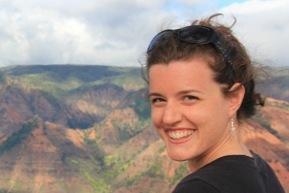GFI/BCCR Seminar: Rapid changes in Pacific Ocean carbon storage during the last glacial termination
Hovedinnhold
Katherine Allen (University of Maine)
Rapid changes in Pacific Ocean carbon storage during the last glacialtermination
Abstract
During the Late Pleistocene, Earth’s climate system shifted between a cold, glacial mode and a warm, interglacial mode several times, but the underlying mechanism for these major climate transitions remains unclear. The ocean is thought to play a key role in glacial cycles, in part due to its ability to store and release a significant proportion of atmospheric CO2. The boron to calcium ratio (B/Ca) of benthic foraminiferal calcite has been developed as a new proxy for seawater carbonate ion concentration ([CO32-]), which provides insight into past amounts and mechanisms of ocean carbon storage. We present results from a depth transect composed of three sediment cores spanning 1.2 – 2.5 km water depth in New Zealand’s Bay of Plenty. B/Ca of the benthic foraminifer Cibicidoides wuellerstorfi is used to reconstruct [CO32-] at the three core sites for the past ~30 ky. Large shifts in [CO32-] (30-40 µmol/kg) occur at the intermediate and mid-depth sites (1.2 and 1.6 km) between 17-9 cal ky BP. Both [CO32-] and 13C of the deeper sites (1.6 and 2.5 km) experience a permanent shift towards higher values between 25-10 cal ky BP. Broad covariation of Cibicidoides 13C with [CO32-] along a “Redfield” line suggests that the amount of isotopically light, respired CO2 in deep waters is decreasing during the deglaciation.
